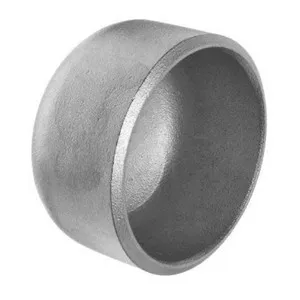-
Cangzhou Yulong Steel Co., Ltd.
-
Phone:
+86 13303177267 -
Email:
admin@ylsteelfittings.com
- English
- Arabic
- Italian
- Spanish
- Portuguese
- German
- kazakh
- Persian
- Greek
- French
- Russian
- Polish
- Thai
- Indonesian
- Vietnamese
- Zulu
- Korean
- Uzbek
- Hindi
- Serbian
- Malay
- Ukrainian
- Gujarati
- Haitian Creole
- hausa
- hawaiian
- Hebrew
- Miao
- Hungarian
- Icelandic
- igbo
- irish
- Japanese
- Javanese
- Kannada
- Khmer
- Rwandese
- Afrikaans
- Albanian
- Amharic
- Armenian
- Azerbaijani
- Basque
- Belarusian
- Bengali
- Bosnian
- Bulgarian
- Catalan
- Cebuano
- China
- China (Taiwan)
- Corsican
- Croatian
- Czech
- Danish
- Esperanto
- Estonian
- Finnish
- Frisian
- Galician
- Georgian
- Kurdish
- Kyrgyz
- Lao
- Latin
- Latvian
- Lithuanian
- Luxembourgish
- Macedonian
- Malgashi
- Malayalam
- Maltese
- Maori
- Marathi
- Mongolian
- Myanmar
- Nepali
- Norwegian
- Norwegian
- Occitan
- Pashto
- Dutch
- Punjabi
- Romanian
- Samoan
- Scottish Gaelic
- Sesotho
- Shona
- Sindhi
- Sinhala
- Slovak
- Slovenian
- Somali
- Sundanese
- Swahili
- Swedish
- Tagalog
- Tajik
- Tamil
- Tatar
- Telugu
- Turkish
- Turkmen
- Urdu
- Uighur
- Welsh
- Bantu
- Yiddish
- Yoruba

فېۋرال . 15, 2025 11:52 Back to list
different flange types
Different flange types play a pivotal role in industrial applications, each designed to meet unique requirements in piping and mechanical systems. Flanges serve as the backbone of pipeline networks, connecting shafts and facilitating the transfer of fluids across various types of equipment. Understanding the nuances of different flange types is essential to selecting the right product for your project and ensuring reliability and safety. This article explores the distinct types of flanges, their applications, and their benefits, offering insights grounded in industry expertise and experience.
Threaded flanges offer a unique advantage in systems where welding is not viable. Typical in low-pressure situations and smaller diameters, the flange is screwed onto a pipe using matching threads. This makes them easily removable and ideal for non-critical, low-temperature applications like utility power plants. Blind flanges, serving as terminators or blockages in pipelines, are crucial in systems requiring isolation or future expansion. Often utilized during pressure testing, these flanges ensure that areas of the pipeline that need to be isolated do not get fluids or gases passing through. Their solid design handles high pressure well, offering a reliable seal. In each of these flange types, material choice plays a vital role. Stainless steel, carbon steel, and alloys are commonly used, each selected for their specific environmental resistance and mechanical properties. Stainless steel offers excellent temperature and corrosion resistance, while carbon steel provides foundational strength at an economic cost. Selecting the right material based on environmental conditions, chemical compatibility, and temperature is a crucial step in flange selection. Safety and efficiency are paramount in industrial processes, making the selection of appropriate flange types crucial. Understanding each type's specific application and benefits not only helps in making informed decisions but also in maintaining system integrity and operational longevity. Proper selection and installation can minimize downtime, enhance safety, and ensure regulatory compliance, particularly in sectors where standards are stringent. As technology advances, flange designs continue to evolve, presenting new opportunities for improved performance and safety. Engineers and industry experts recommend a thorough assessment of operational requirements, anticipating both current and future demands to ensure that the flange systems are up to date and reliable. Comprehensive understanding and application of different flange types demand more than just technical knowledge—they require a blend of field experience, expertise, and adherence to authoritative standards to establish trustworthiness and maintain industry standards. Properly managed, flanges contribute significantly to the efficient and safe operation of mechanical systems across diverse industries.


Threaded flanges offer a unique advantage in systems where welding is not viable. Typical in low-pressure situations and smaller diameters, the flange is screwed onto a pipe using matching threads. This makes them easily removable and ideal for non-critical, low-temperature applications like utility power plants. Blind flanges, serving as terminators or blockages in pipelines, are crucial in systems requiring isolation or future expansion. Often utilized during pressure testing, these flanges ensure that areas of the pipeline that need to be isolated do not get fluids or gases passing through. Their solid design handles high pressure well, offering a reliable seal. In each of these flange types, material choice plays a vital role. Stainless steel, carbon steel, and alloys are commonly used, each selected for their specific environmental resistance and mechanical properties. Stainless steel offers excellent temperature and corrosion resistance, while carbon steel provides foundational strength at an economic cost. Selecting the right material based on environmental conditions, chemical compatibility, and temperature is a crucial step in flange selection. Safety and efficiency are paramount in industrial processes, making the selection of appropriate flange types crucial. Understanding each type's specific application and benefits not only helps in making informed decisions but also in maintaining system integrity and operational longevity. Proper selection and installation can minimize downtime, enhance safety, and ensure regulatory compliance, particularly in sectors where standards are stringent. As technology advances, flange designs continue to evolve, presenting new opportunities for improved performance and safety. Engineers and industry experts recommend a thorough assessment of operational requirements, anticipating both current and future demands to ensure that the flange systems are up to date and reliable. Comprehensive understanding and application of different flange types demand more than just technical knowledge—they require a blend of field experience, expertise, and adherence to authoritative standards to establish trustworthiness and maintain industry standards. Properly managed, flanges contribute significantly to the efficient and safe operation of mechanical systems across diverse industries.
Latest news
-
ANSI 150P SS304 SO FLANGE
NewsFeb.14,2025
-
ASTM A333GR6 STEEL PIPE
NewsJan.20,2025
-
ANSI B16.5 WELDING NECK FLANGE
NewsJan.15,2026
-
ANSI B16.5 SLIP-ON FLANGE
NewsApr.19,2024
-
SABS 1123 FLANGE
NewsJan.15,2025
-
DIN86044 PLATE FLANGE
NewsApr.19,2024
-
DIN2527 BLIND FLANGE
NewsApr.12,2024
-
JIS B2311 Butt-Welding Fittings LR/SR 45°/90° /180°Seamless/Weld
NewsApr.23,2024











